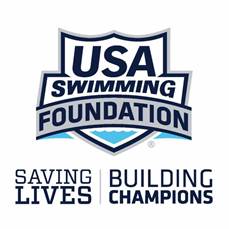Swimming and Breast Cancer
The month of October brings the colors of autumn, cooler temperatures, and the fun and games associated with Halloween. However, October also brings an outpouring of the color pink because it is also Breast Cancer Awareness Month.
Breast cancer is a disease in which cells in the breast grow out of control. There are different kinds of breast cancer. The kind of breast cancer depends on which cells in the breast turn into cancer. Breast cancer can begin in different parts of the breast. Breast cancer can occur in women and rarely in men. Other than skin cancer, breast cancer is the most common cancer among American women. Each year in the United States, about 255,000 women get breast cancer and 42,000 women die from the disease. Mammograms are the best way to find breast cancer early, when it is easier to treat and before it is big enough to feel or cause symptoms.Treatment depends on the stage of cancer. It may consist of chemotherapy, radiation, and surgery.
Cancer and the treatments associated with it can cause massive exhaustion leading to bed rest and/or drastic reduction of physical activities as advised by doctors. However, new evidence encouraging patients to exercise during and after their treatments continue to emerge as more studies focus on the quality of life and health benefits that can be achieved from continuing physical activity. Among the recommended activities is swimming!
The Effects of Swimming During and After Chemotherapy:
Swimming is an excellent source of aerobic activity that uses the resistance of the water for the swimmer to move through. Furthermore, horizontal posture of the swimmer results in moderately increased stroke volume, improved cardiac output, and lower heart rates. Also, because the swimmer is not fighting gravity, an increase in exercise-related blood pressure does not occur. Swimming can offer numerous cardiovascular benefits for the patient recovering from the debilitating effects of chemotherapy. Swimming provides an excellent means for the cancer patient to increase mitochondria, red blood cells, capillaries, and blood volume, resulting in an increase of oxygen delivery to the human organ systems. Improvements in energy and cardiovascular function are just some of the many benefits to regular swimming. It is important to note that because immune systems are also compromised, timing of the swim workouts is important. To swim when the pool is crowded, particularly during flu and cold season, may not be ideal. Choosing a time of day where fewer people are in the pool may be preferred.
The Effects of Swimming During and After Radiation:
Precaution to swimming: patients undergoing radiation should receive clearance from the radiology oncologist before initiating a swim program. Some patients experience skin irritation as a result of radiation treatments. The chlorinated water may exacerbate those problems. Also, radiation patients are restricted from exposure to the sun. Protective clothing may be needed if using an outdoor pool. Also, if the oncology team allows the patient to swim, precautions to protect skin from sun and chemicals should be employed. Most radiation patients will probably choose to engage in light aerobics, instead of swimming, during radiation treatments for the reasons mentioned above.
The Effects of Swimming After Surgery:
With the mounting evidence that resistance training improves healing and range of motion (ROM), it still presents the question of how does swimming fit into the equation of rehabilitation for the injured chest or arm muscles. The simple act of moving through the water provides a form of gentle stretch and resistance. During the freestyle stroke, the patient can initiate a controlled functional stretch. This action helps to strengthen and elongate the damaged muscles, which can help heal old injuries . Whether the patient is recovering from breast-altering surgery or lymph node removal, gentle stretch and resistance exercises help to improve strength, flexibility, and ROM . However, ALL post-surgical patients need to employ various modifications in their exercise programs.
In conclusion, there are still physical activities safe enough for current and recovering breast cancer patients to remain involved in. However, every case is different and it is EXTREMELY important for all patients to check with their doctors before beginning or continuing any activity - including swimming! This weekend delivers the much anticipated Halloween and the end of October. As you are out celebrating with your family and friends amongst the colorful costumes and decor, be sure to notice the shades of pink before they are taken down. October may be ending but the fight against Breast Cancer is only beginning.
For more information on Breast Cancer research, charities, and mammograms visit the following sites:
Mayo Clinic - https://www.mayoclinic.org/diseases-conditions/breast-cancer/care-at-mayo-clinic/mac-20352479
Breast Cancer Foundation - https://www.nationalbreastcancer.org
This article is brought to you by: The Swimming Swan















